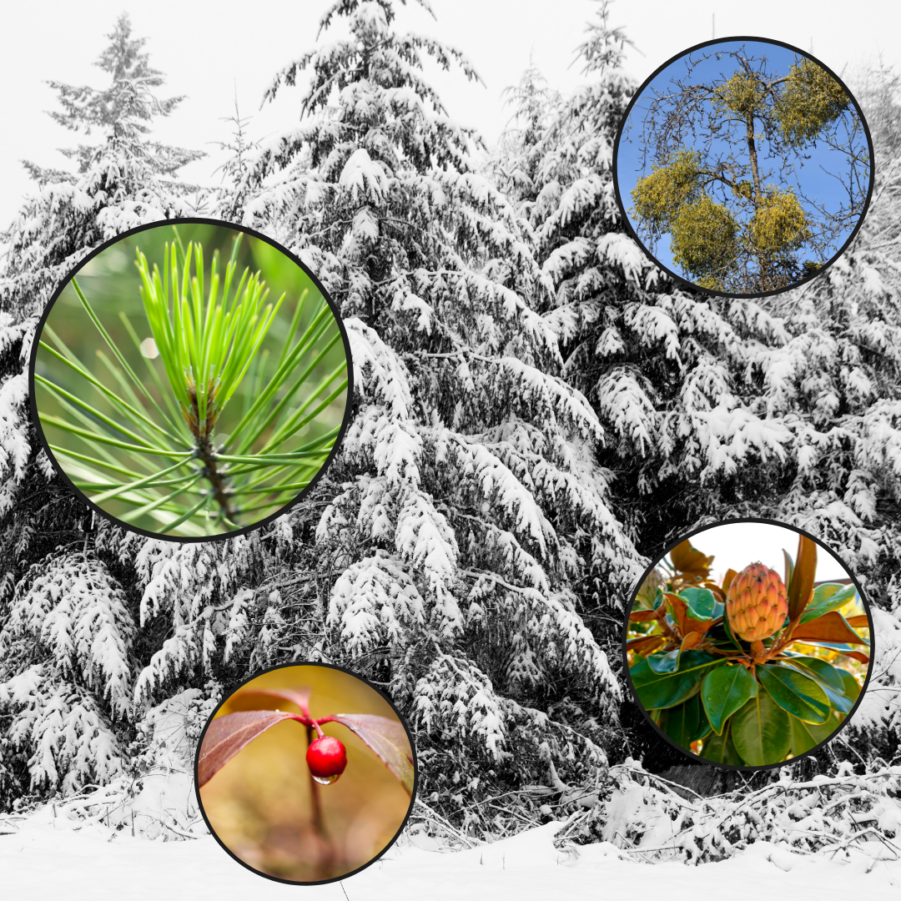A dash of color can go a long way among the browns and grays of a long winter. With many trees losing their leaves, many of us are desperate for the vibrant green of Spring by the time it rolls around. Fortunately, if you know where to look, it can be relatively easy to find plants that are evergreen. This means that they stay green in Winter. If winter colors are making you feel a little “blah”, keep an eye out for some of the plants mentioned below. In this Wildlife Spotlight post, we’ll learn about 9 groups of plants that stay green all winter long.
1. Hollies
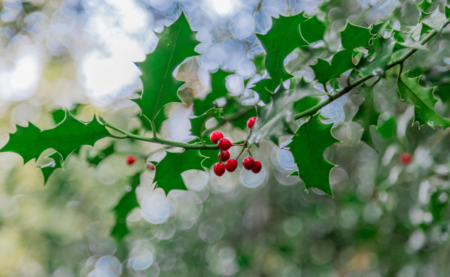
There’s a reason why folks deck the halls with these plants (fa la la…)! Hollies, a group of plants in the genus Ilex, include many evergreen species like the European holly Ilex aquifolium. They actually get their name from a Eurasian oak species, Quercus ilex, that also doesn’t lose its leaves. If you live in North America, you’ll find many hollies in the South, like American holly (Ilex opaca) and possumhaw (Ilex decidua). Interestingly, some holly species produce caffeine like tea or coffee bushes. In North America, the Yaupon holly (Ilex vomitoria) does so, as does the popular Yerba maté (Ilex paraguariensis) of South America.
2. Mistletoes
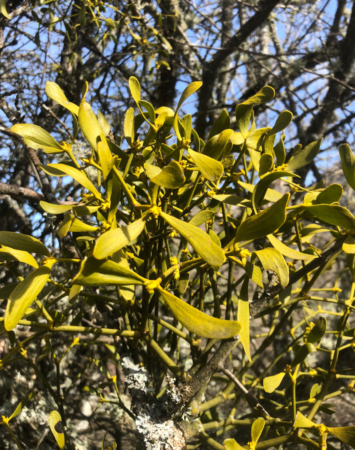
The name “mistletoe” actually refers to a large variety of parasitic “vampire plants” that tap into host plants and feed on their sap. All mistletoes are epiphytes, meaning that they live in the branches of larger plants like trees. Many mistletoes in Eurasia and North America are evergreen, sticking out like a sore thumb as their hosts lose their leaves in Fall and Winter. This is how they got their reputation as symbols of vitality! For more on mistletoes, check out our post all about these amazing plants and their holiday traditions.
3. English ivy
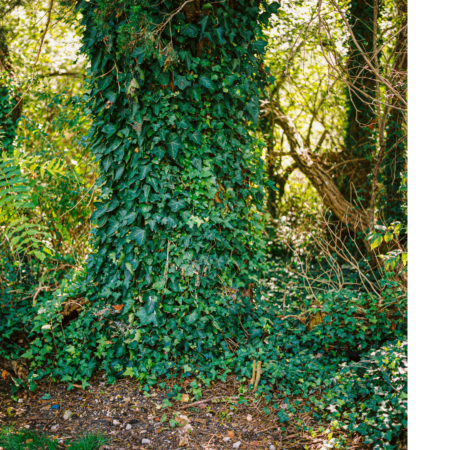
Also known as the Common ivy, this plant’s Latin name is Hedera helix. Although they are native to the British Isles and much of Western Europe, folks have introduced throughout the world. I have found these popular ornamental plants all over the U.S. on buildings and growing wild. As climbing vines, ivies are common along the sides of old buildings (hence the ivy league of American colleges!), although people also use them as a groundcover. Their gorgeous leaves remain dark green year round, and their berries can attract birds during warmer seasons. Importantly, English ivy is an invasive species in North America, and should not be planted as part of a decorative landscape.
4. Magnolias
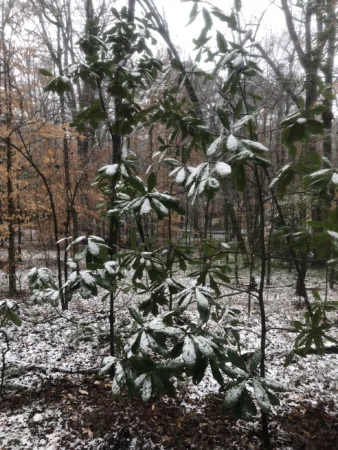
Magnolias (belonging to the genus Magnolia) are ancient plants that typically have huge leaves and large, showy flowers. While not all magnolias are evergreen, quite a few of them are, including some of the most common species in North America. Since moving to Georgia, I’ve enjoyed finding Southern magnolias (Magnolia grandiflora) both in the wild and around town parks and gardens. Their massive flowers give off a delightful perfume throughout the Spring. Even when they aren’t flowering, they spot huge, glossy leaves that stand out when other trees are bare. By contrast, sweetbay magnolias (Magnolia grandiflora) have much smaller leaves. In my experience, their flowers smell like sweet version of sunscreen.
Surprisingly, beetles are among the main insects that pollinate magnolias. Curious about other pollinators other than bees? Check out this post on other unexpected pollinators in the animal kingdom.
5. Greenbriers
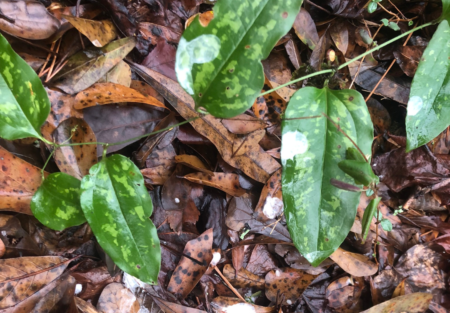
Greenbriers, also known as cats-claws, belong to the genus Smilax. As you might guess from their name, these viny plants stay green in Winter, even if they lose their leaves! Greenbriers are found throughout tropical and subtropical Central, South, and North America, and stray up into temperate regions as well. There are also dozens of species in China. One of the most famous members of this genus, sasparilla (Smilax ornata) was once a common ingredient in rootbeer.
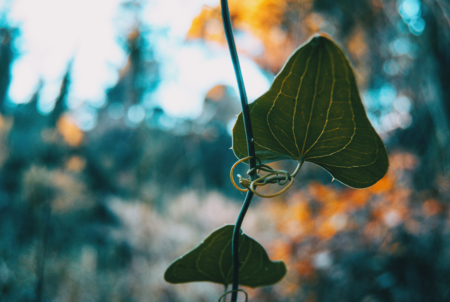
Greenbriers grow as woody, green vines that often interweave themselves with understory plants. This can form dense thickets. Furthermore, since many species have thorns, some of them quite sharp, they can make some woodland habitats difficult to move through. Although I haven’t found them yet (if you have, please send a picture!) greenbriers have small, unassuming flowers. Fascinatingly, the flowers of many species produce weird smells like that of rotten meat to attract flies!
6. Wintergreen

Talking about plants that stay green in winter, it would feel silly to leave out one of my favorites. After all, it’s in the name! Wintergreens (genus Gaultheria) are typically tiny woody plants that grow on forest floors. They are relatively common in moist forests with thick canopies in Eastern North America. Other wintergreens are found all over the world, including in Oceania and the Himalayas, and include some sizable shrubs.
Wintergreens belong to the plant family Ericaceae, which includes blueberries, huckleberries, and cranberries. Some, but not all, of the wintergreens also have edible berries, and these often add a delightful splash of color to a dark winter forest. One of my favorites, the Eastern teaberry (Gaultheria procumbens) is actually the origin of wintergreen flavoring in gum! As its name implies, it can make a nice little tea, although I haven’t tried it myself. A good plan for this winter!
7. Mosses
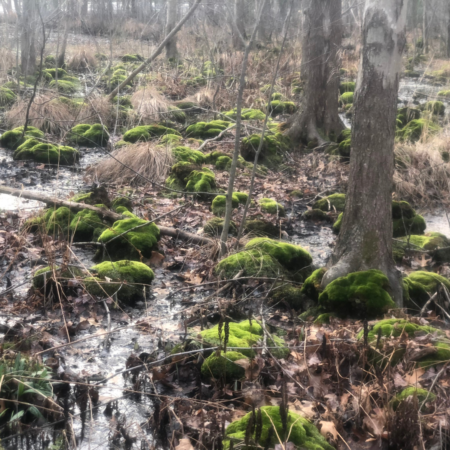
Mosses include 12,000+ species of non-vascular plants. By not having xylem and phloem to move their sap around, they aren’t as vulnerable to damage by freezing. This enables a great many mosses to stay green during winter. They can stay active, green, and photosynthesizing as long as they have enough water. You’ll often find green mosses on rock faces or under trees in many forests, or even growing on tree branches as epiphytes. Want to learn more about these ancient plants? Check out our Wildlife Spotlight on mosses!
8. Ground pine
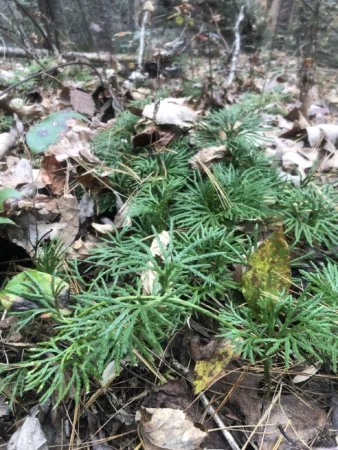
Ground pine or Lycopodium is another charming forest dweller common in many temperate forests. Also known as creeping cedars, they are simple vascular plants, sort of like an intermediate between mosses and seed-producing “higher” plants. In this sense, they are similar to ferns. These adorable little plants thrive in moist climates, and I typically encounter them while hiking in the mountains. They resemble tiny little pines growing close to the ground (hence their name!) but never produce any pinecones or flowers. Ground pines have a nearly global distribution, belonging to a larger group called the quillworts or club-mosses.
9. Conifers
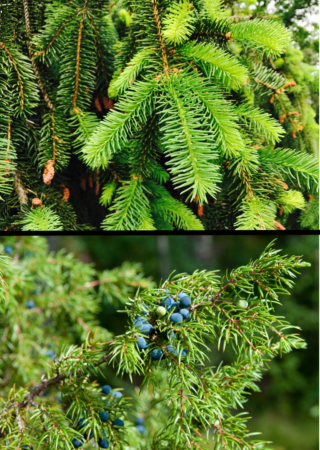
Last but not least are the conifers. So many people, these trees are synonymous with the name “”evergreen”. The conifers include some of the most famous plants that stay green in winter. Major conifer tree groups include:
- Pines (Pinus sp.)
- Spruces (Picea sp.)
- Firs (Abies sp.)
- Larches or tamaracks (Larix sp.)
- Junipers (Juniperus sp.)
- Cedars (including Cedrus, Cupressus, Thuja, Chamaecyparis, and more)
- Yews (Taxus sp.)
Almost everyone is familiar with conifers of some kind, from popular winter holiday decorations like Christmas trees to national emblems like the Flag of Lebanon. Conifers are all gymnosperms, meaning that they are “higher” plants that bear seeds, but they do not produce flowers. Instead, they typically reproduce using cones that can be male or female.
Another key characteristic of conifers is that their leaves are thin and needle-like. These can be thick, stick, and sharp, as in some pines, or feathery and soft as in some larches and baldcypress. Although they are less efficient than the big leaves of deciduous trees, these needles are more hardy to freezing. Because of this, conifers thrive in cold environments like the far North or South, and high elevations. Ever wondered why firs, spruces, and pines became symbols of Winter?
Conifers often protect themselves from cold, fire, and insects using resin, a special kind of sap. These resins can be useful to people in many ways, from incense to turpentine!
Thanks for reading about plants that stay green in winter!
What’s your favorite evergreen plant, and where do you find it? Share with us in the comments! If you enjoyed this post, please support the blog by sharing this post and connecting with us on social media. If you have an idea for post you’d like to see on Gulo in Nature, get in touch using the Contact Page. Thank you for reading!

